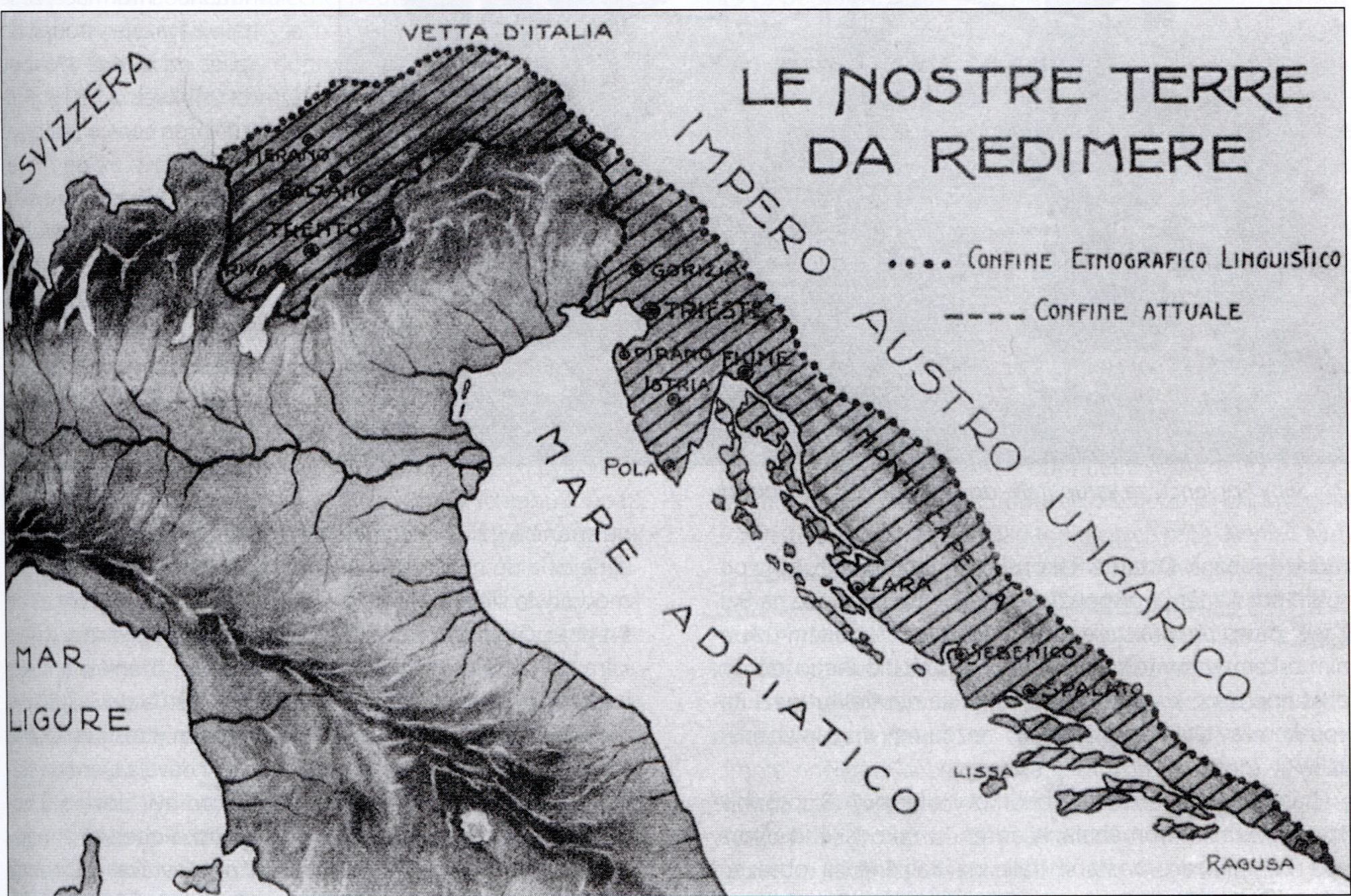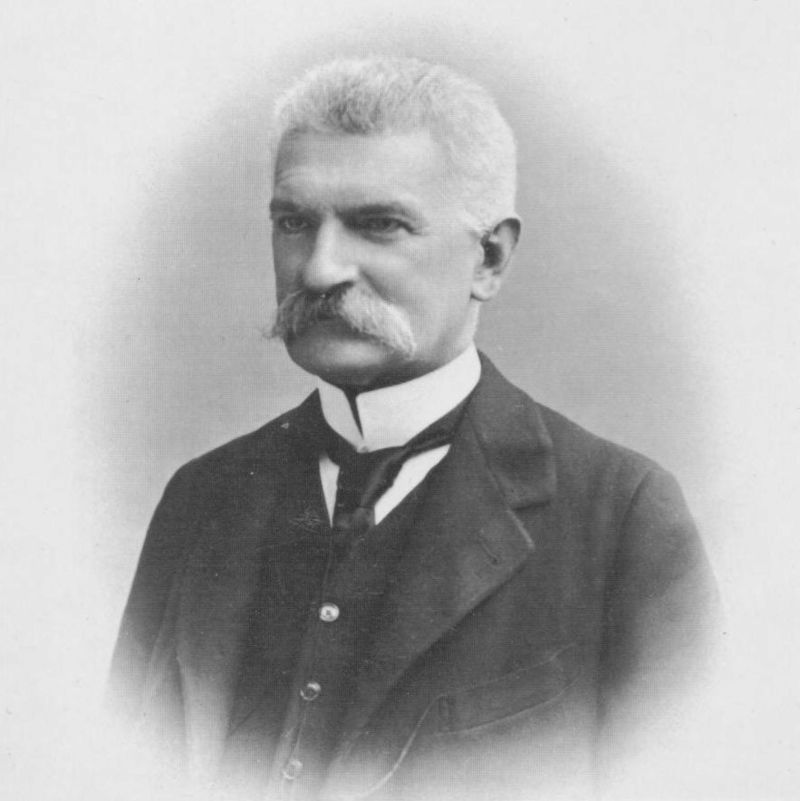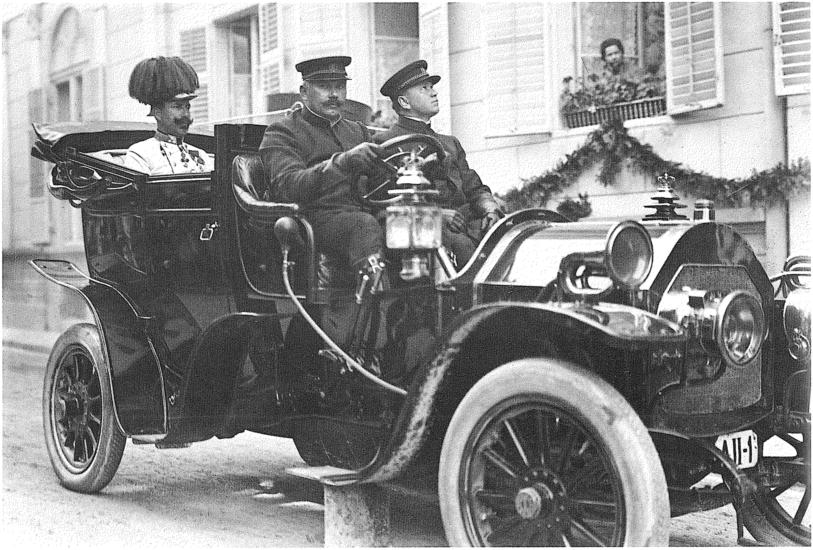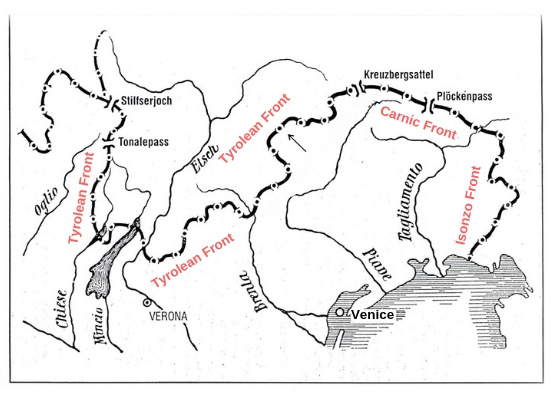Reasons why Italy entered the war
| Site: | MOOC Charles University |
| Course: | Italian front 1915-1917 along the Isonzo river - 2021 |
| Book: | Reasons why Italy entered the war |
| Printed by: | Guest user |
| Date: | Friday, 5 December 2025, 6:54 AM |
1. Political situation before the war
Italy´s entry into the war against Austria-Hungary on 23 May 1915 was not surprising, as the Italian government´s shifting from one side to another was already well known. Before that happened, the Kingdom of Italy had agreed to the secret, so-called Treaty of London with the states of Entente on 26 April 1915, in which Italy was promised South Tyrol, Princely County of Gorizia and Gradisca with Trieste and Northern Dalmatia in return for entering the war.
Italian claims for southern territories of Austria-Hungary

Source:
VRIČAN, J.: Po zapadlých stopách českých vojáků: Z Julských Alp k Jadranu, Olomouc 2008.
Parallel Italian diplomacy played the same game with Vienna in 1914. Italy offered its help against France, as Italy demanded the southern territories of the Habsburg monarch, the declaration of Trieste as a free city, the recognition of the Italian sovereignty over the Albanian Vlore county, and the promise of French colonies, which Vienna refused. Italian politicians did not have any problem with such an equivocal attitude. The last pre-war Italian Foreign Minister, Sidney Sonnino, did not deny his philosophy of “sacro egoismo“, which meant gaining the maximum profit from war. The chief of the Italian General Staff, Lieutenant Luigi Cadorna, was more straightforward. Already in August 1914, he began intensive troop training aimed at fighting a war against the Habsburg monarchy. Less than a month after the Treaty of London was signed, Italy declared war against Austria-Hungary on 23 May 1915. At that time, however, the goal of the Entente was not to break up the Austro-Hungarian Empire, as its existence was still considered as a prevention of the "Balkanization" of Central Europe.
Source:
ŠEDIVÝ, I.: Češi, české země a Velká válka 1914-1918, Prague 2001.
Sidney Sonnino

Source:
https://it.wikipedia.org/wiki/Sidney_Sonnino#/media/File:Sidney_Sonnino_2.jpg
2. Declaration of war
For Austria-Hungary, the Italian declaration of war meant the emergence of a new front with another dispersal of forces on several battlefields. The Austrian border with Italy was poorly fortified by territiorial defense untis in a situation where the main forces of the army were tied down to the eastern and Balkan fronts. Territorial defense units were formed by the Tyrolean k. k. Landeschützen along with other volunteer shooting units, Landsturm march battalions, a few cavalry squadrons, and less than fifty artillery batteries. That is why Armeeoberkommando1, the General Staff of the k. u. k. Army, urgently decided to establish the Southwest Front, under the command of Archduke Eugen.
Archduke Eugen von Habsburg - Lothringen

Source:
https://en.wikipedia.org/wiki/Archduke_Eugen_of_Austria#/media/File:Archduke_Eugen_in_Ischl.JPG
The Italian front was stretched over 650 km along the entire Italian-Austrian border and was divided into 3 fronts. In the northwest was the Tyrolean Front, commanded by General Viktor Dankl. The northern Carnic Front covered the ridges of the Carnic and Julian Alps and was entrusted to Franz Rohr. To the southeast in the Küstenland2 the Isonzo Front stretched along the Isonzo River and was commanded by Svetozar Boroević von Bojna. At the Tyrolean front, the high mountain stretches were mostly occupied by mountain troops, and the war consisted of isolated battles for conquering peaks and passes. The first offensive operation in Venice (the so-called “Strafexpedition“) was here unsuccessfully attempted by Franz Conrad von Hötzendorf in the spring of 1916.
1 abbreviation of AOK
2 Austrian Littoral
Source:
ŠEDIVÝ, I.: Češi, české země a Velká válka 1914-1918, Prague 2001.
Map of Italian Front

Source:
ČEPELKA, M.: Fronta v Dolomitech, Lysá nad Labem 1993.
3. Carnic and Isonzo Front
The front in the Carnic Alps and the northern part of the Julian Alps formed a more peaceful stretch of the Italian front. But in October 1917 the southeastern part of the Julian Alps became a platform for the German-Austrian-Hungarian offensive after a breakthrough at Caporetto1 and the subsequent advance of Austro-Hungarian troops to Veneto ended fighting in these two stretches of the front.
Immediately after the declaration of war by Italy, the Isonzo front became the scene of major struggles that quickly reached extreme dimensions and intensity. Austro-Hungarian units were withdrawn from other fronts for this purpose. The first five divsions from the Balkans and three divisions from Galicia had arrived in Zagreb by 5 June 1915. The military headquarters of the 5th Army were established on 27 May and led by Svetozar Boroević von Bojna in Ljubljana, and then later in Postojna.
Italian troops crossing borders

Source:
VRIČAN, J.: Po zapadlých stopách českých vojáků: Z Julských Alp k Jadranu, Olomouc 2008.
Beginning on 24 May 1915, the forward units of the 2nd and 3nd Italian army began its attempts to conquer the border region of the Habsburg monarchy. The Italian artillery launched an attack by concentrating its fire on the railway transport in the Isonzo valley. The Italian infantry attacked the Austro-Hungarian defense along the entire Isonzo river, especially the bridgehead on the west bank at Gorizia2. The forming of a continuous Austro-Hungarian defense along the Isonzo river took place in a complicated situation in which the defender had to face from the very beginning the vast numerical superiority of the Italian rivals.
1 In Slovene Kobarid, in German Karfreit.
2 In Slovene Gorica, in German Görz.
Source:
GOOCH, J.: The Italian Army and the First World War, Cambridge 2014.